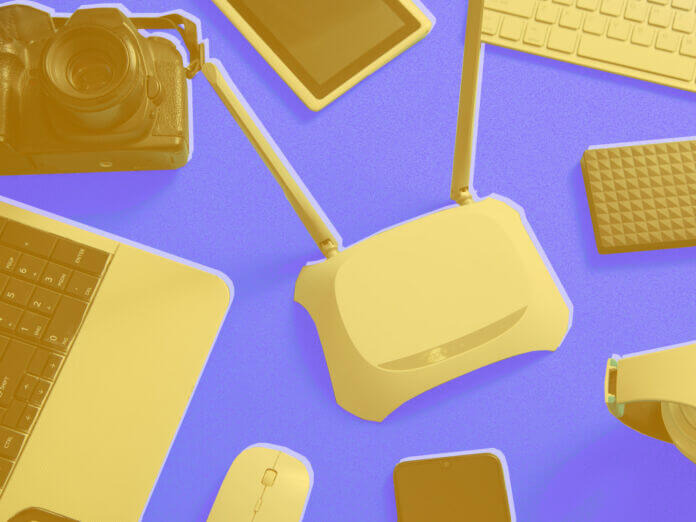
Rotimatic – October 30, 2024
Collected at: https://www.iotforall.com/beyond-the-smart-home-how-iot-is-reinventing-everyday-devices
IoT is no longer confined to the realm of smart homes. It’s revolutionizing everyday devices across various industries, from kitchen appliances to healthcare, transportation, and beyond. IoT is fundamentally reshaping how we interact with the devices we use daily. In this article, we’ll explore how IoT is reinventing everyday devices in consumer electronics and industries, plus the technical backbone that makes this possible.
IoT Transforming Industries: Consumer Electronics
Case Study: Rotimatic
One of the most exciting applications of IoT in consumer electronics is Rotimatic, an automatic roti maker that uses IoT for remote management, sensor diagnostics, and continuous software updates. With its IoT capabilities, Rotimatic allows users to control the appliance via a mobile app. From tracking ingredient usage to monitoring the internal temperature during the cooking process, the device offers an unprecedented level of automation in the kitchen.
Imagine being able to remotely start the machine or receive notifications when it’s time to refill flour or water. IoT enables seamless remote recipe updates, meaning users can receive new features or cooking settings without needing to purchase new hardware. This enhances user convenience and ensures that the appliance stays up-to-date with the latest innovations in cooking automation.
Examples of IoT Reinventing Everyday Devices
Smart Refrigerators
Modern refrigerators equipped with IoT can track the inventory inside. They send notifications when items are running low or nearing their expiration date. These smart fridges can even suggest recipes based on the ingredients available. This creates a connected ecosystem in the kitchen that’s both efficient and waste-reducing.
Connected Fitness Equipment
IoT has entered the fitness world with smart treadmills, stationary bikes, and other gym equipment. These devices can sync with apps to provide personalized workout plans, track progress, and even offer remote coaching. This integration gives users a customized fitness experience based on real-time performance data.
Intelligent Clothing
Yes, even clothing has gone smart! IoT-driven textiles can monitor your health metrics—like heart rate or body temperature—and send the data to your phone or health provider. Wearable tech embedded in garments is poised to offer real-time health insights for everything from fitness to medical diagnostics.
The Technical Underpinnings of IoT-Driven Devices
IoT devices rely on a combination of sensors, connectivity, and cloud-based platforms. Sensors gather data from the physical world, while connectivity technologies (like Wi-Fi, Bluetooth, or cellular networks) transmit this data to the cloud for analysis and processing. AI and machine learning algorithms play a crucial role in interpreting sensor data, making intelligent decisions, and providing valuable insights.
Despite its immense potential, IoT faces challenges such as security, scalability, and privacy. Ensuring the security of connected devices is paramount to protect user data and prevent unauthorized access. As the number of IoT devices grows, scalability becomes a concern, requiring robust infrastructure to handle the increased data load. Privacy is another critical issue, as IoT devices collect and transmit personal information. Addressing these challenges will be essential for the continued growth and adoption of IoT technologies.
IoT Transforming Industries Beyond Consumer Electronics
While IoT’s presence in consumer electronics is significant, its impact on industries like healthcare, agriculture, manufacturing, and transportation is nothing short of revolutionary.
Healthcare: Remote Patient Monitoring and Smart Hospitals
IoT is enabling real-time patient monitoring through wearable devices that can track vital signs and send that data directly to doctors. For example, smart wearables can monitor heart rates, glucose levels, or oxygen saturation and alert healthcare providers of any anomalies. In hospitals, IoT is used to track medical equipment, optimize workflows, and even predict patient needs, transforming healthcare into a more proactive and data-driven system.
Agriculture: Precision Farming and Livestock Monitoring
IoT is changing the face of modern agriculture through precision farming. This approach involves using sensors and drones to monitor soil conditions, crop health, and weather patterns in real-time. Smart irrigation systems, driven by IoT, can adjust water levels based on soil moisture data. This maximizes crop yields and reduces water waste. Additionally, IoT-powered livestock monitoring systems can track animal health and location, allowing farmers to manage their operations more efficiently.
Manufacturing: Predictive Maintenance and Industry 4.0
In the manufacturing sector, IoT is a critical component of Industry 4.0, which focuses on smart factories and automation. IoT sensors can monitor the condition of machinery and predict failures before they happen, minimizing downtime and saving on maintenance costs. This predictive maintenance is revolutionizing how manufacturers approach production efficiency, creating safer and more productive work environments.
Transportation: Autonomous Vehicles and Smart Traffic Management
The transportation industry is rapidly evolving thanks to IoT. Autonomous vehicles are equipped with IoT sensors that allow them to communicate with each other and their surroundings, making them safer and more efficient. IoT-driven smart traffic management systems can reduce congestion by dynamically adjusting traffic lights based on real-time traffic data, leading to smoother commutes and reduced carbon emissions.
Conclusion
IoT is reinventing everyday devices, from our homes to our workplaces. By combining hardware, software, and connectivity, IoT is unlocking new possibilities and driving innovation across various industries. As the technology continues to evolve, we can expect to see even more exciting and transformative applications in the years to come.

Leave a Reply